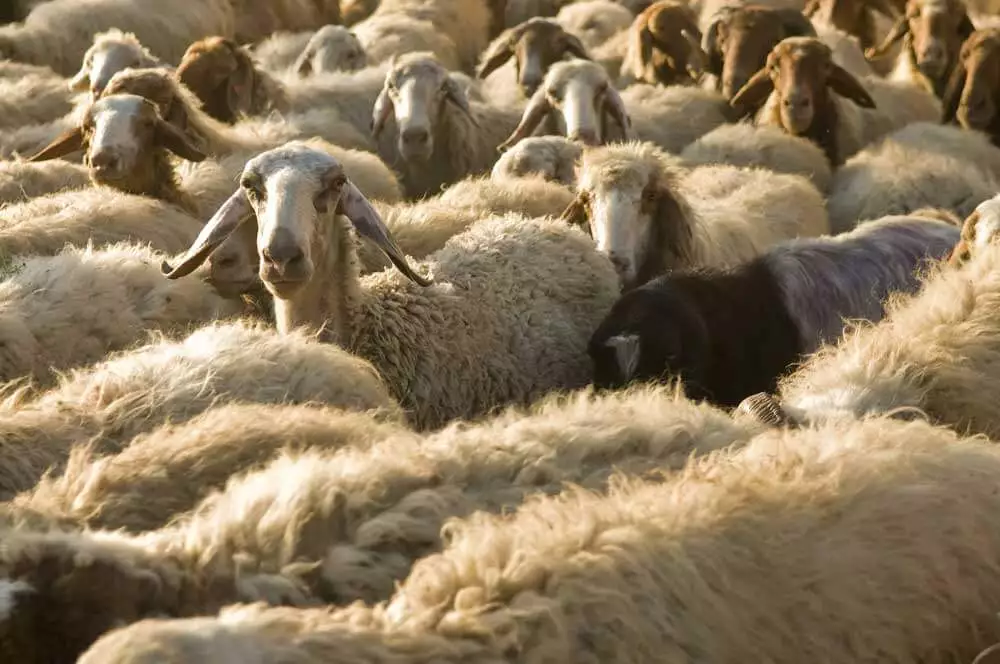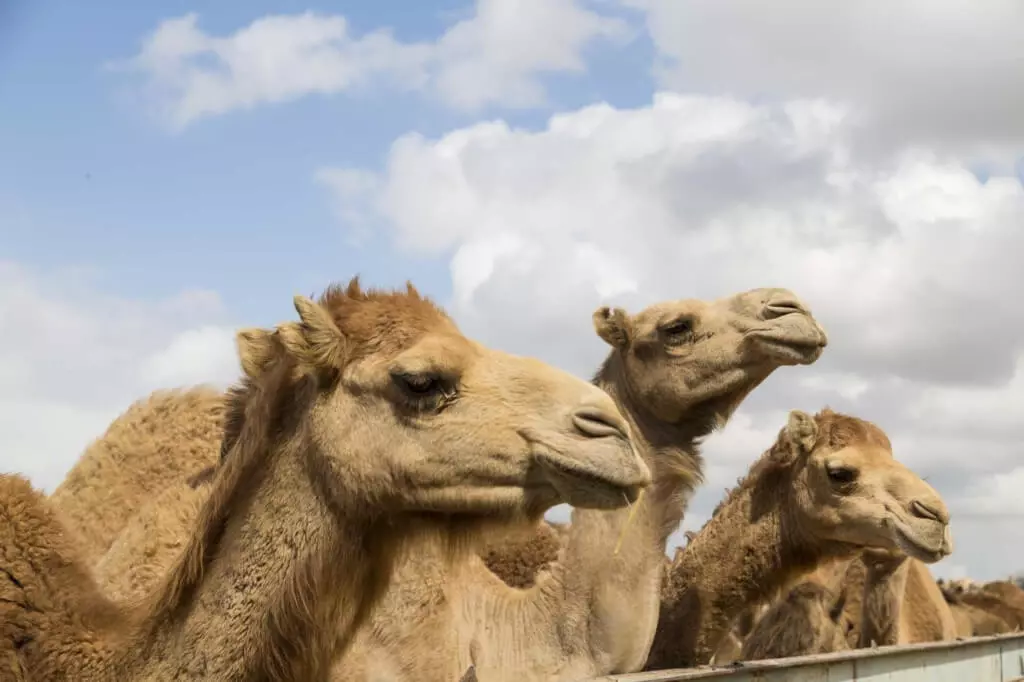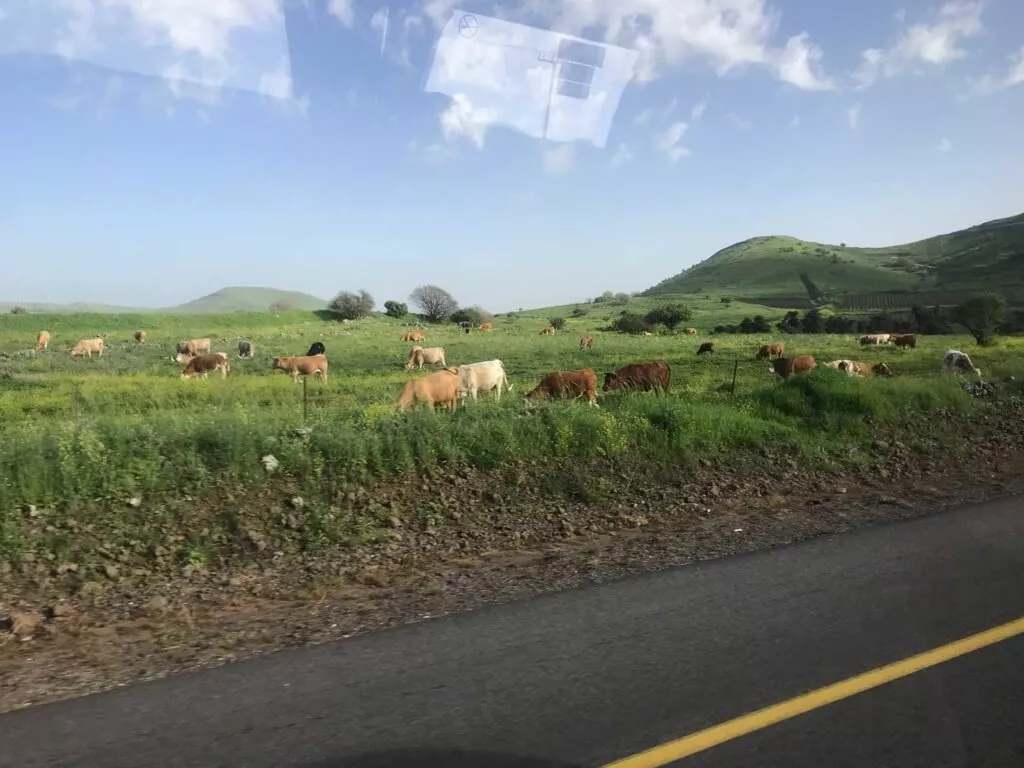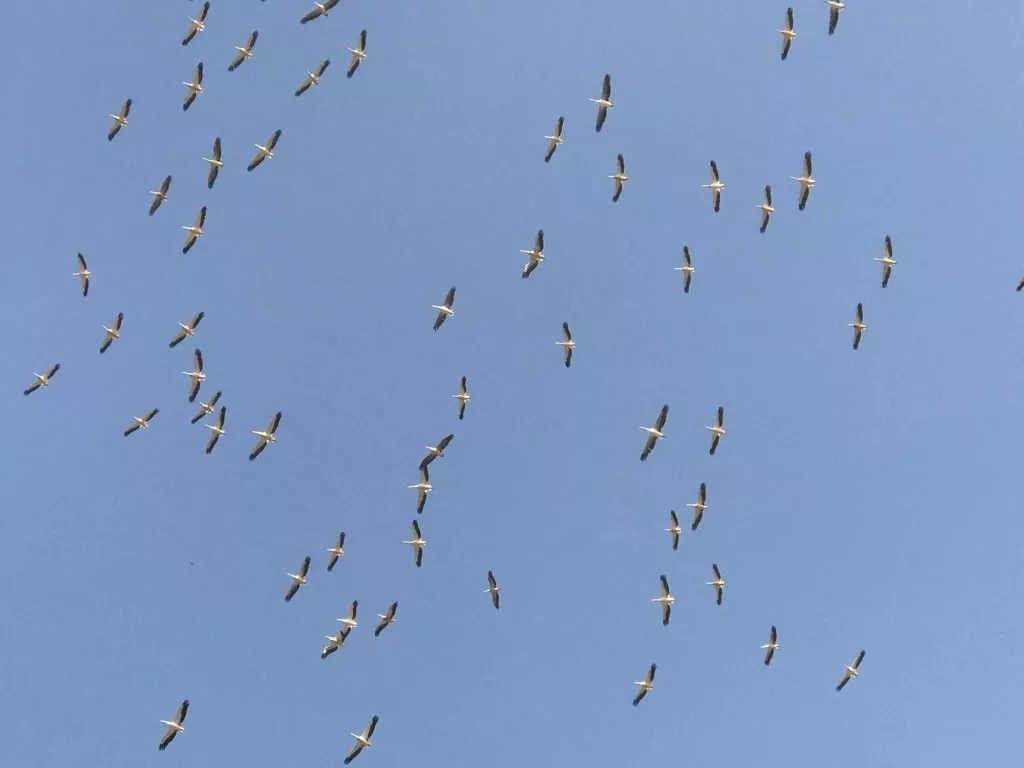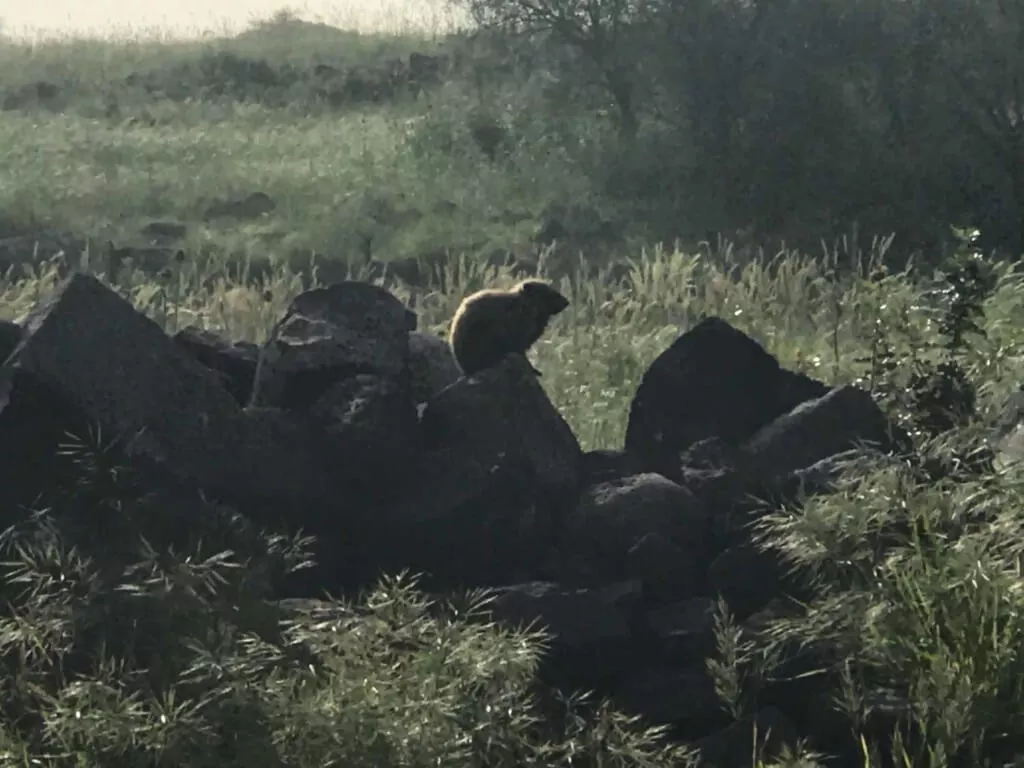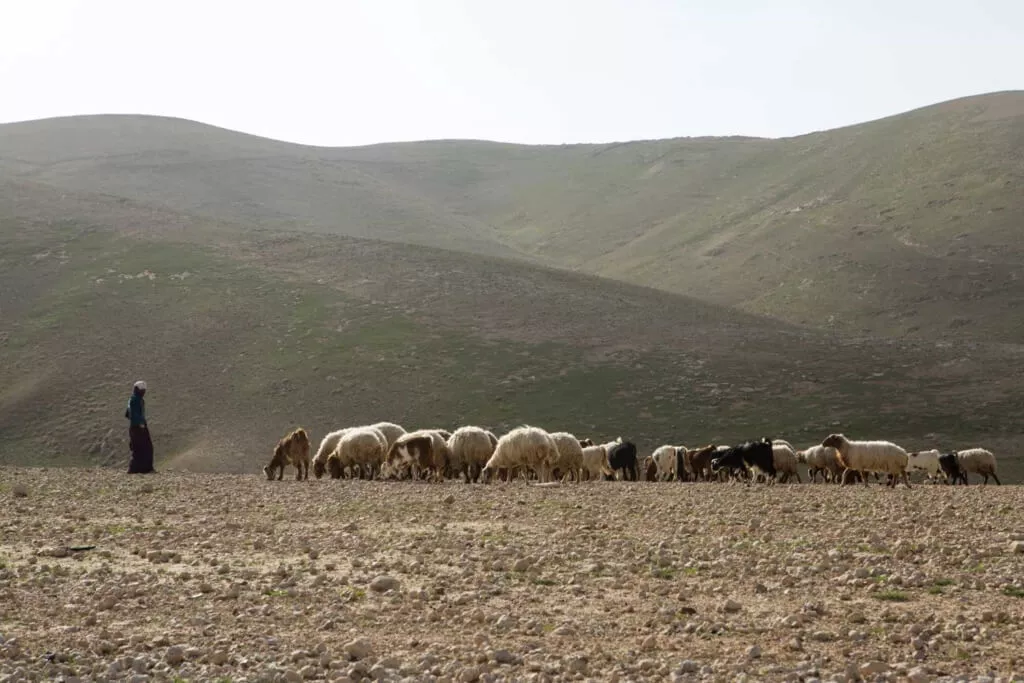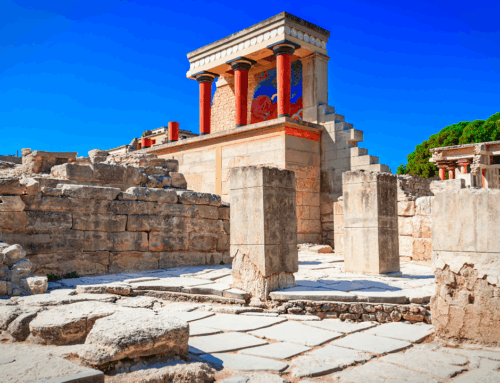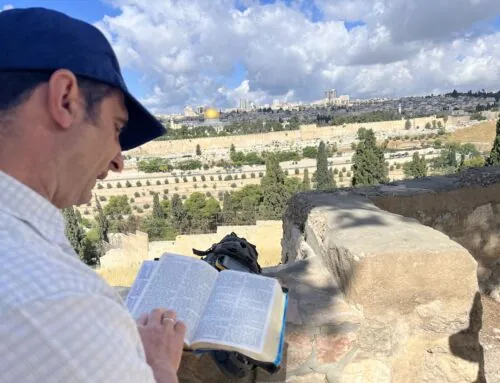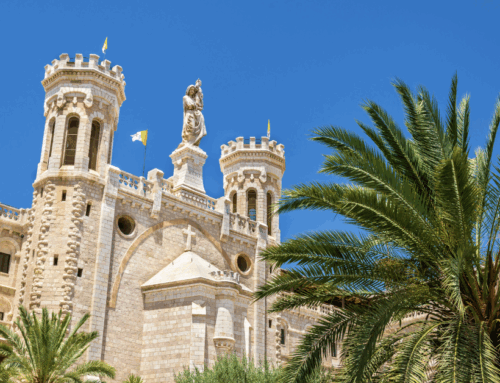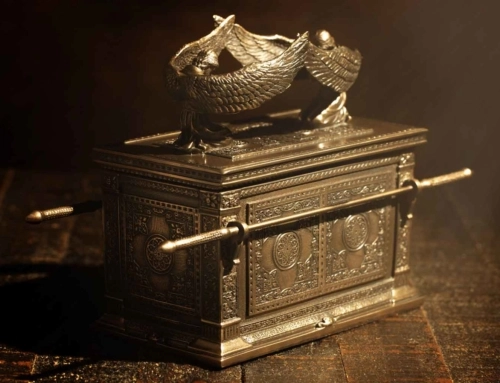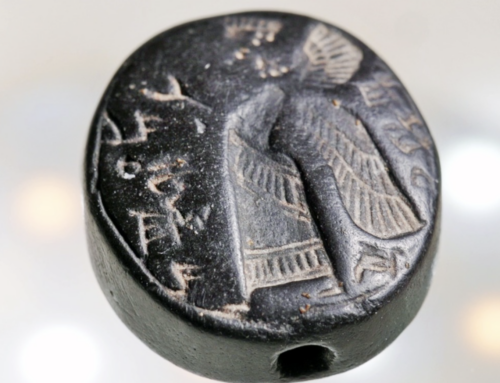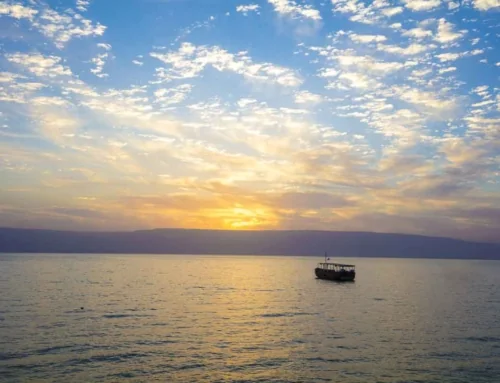While visiting the Holy Land, the instinct may be to focus solely on searching for archaeological remains and pinpointing biblical locations. However, you must not forget about the land itself. Numerous descriptions in the scriptures draw upon elements of nature, including weather patterns, landscapes, and wildlife. Therefore, delving into the environmental and cultural context enriches your comprehension and appreciation of biblical narratives.
An amazing parable about the landscapes in the Galilee are is written in Matthew 13:31-32: ‘The kingdom of heaven is like a mustard seed, which a man took and planted in his field. Though it is the smallest of all seeds, yet when it grows, it is the largest of garden plants and becomes a tree, so that the birds come and perch in its branches’.
Considering Jesus’s parables, if you find yourself amidst the hills of the Galilee during spring, mustard plants will dot the landscape. You can perhaps imagine that Jesus was in a field reaching for a mustard seed to show as an example of the lesson!
When embarking on a Christian tour, keep an eye out for biblical animals! Animals played a significant role throughout the Old and New Testament, serving as metaphors, symbols, and even companions to biblical figures, enriching the narratives and teachings of the scriptures. Here’s a brief list of animals you should watch for when visiting the Promised Land:
Camels in the Holy Land
Camels have a long history intertwined with the land of Israel, dating back thousands of years. In biblical times, camels were vital to the economy, transportation, and daily life of the people living in the region. These resilient animals were well-suited for traversing the arid landscapes of the desert, making them invaluable for long-distance travel and trade routes. In modern-day Israel, camels still hold cultural significance, particularly in areas with Bedouin communities. Tourists visiting Israel often have the opportunity to ride camels in designated areas, providing them with a unique and memorable experience reminiscent of the ancient ways of travel in the Holy Land.
On your Christian tour, there will be an opportunity to ride a camel! Be sure to look out your window, you will also see them in herds as you make your journey through the deserts. You can find camels mention in numberous places in the Bible, including: Genesis 24:10, Leviticus 11:4, Isaiah 30:6, and Matthew 3:4, 19:24, and 23:24.
Cattle in the Holy Land
Cattle have a significant presence in Israel, both historically and in modern times. In ancient times, cattle were crucial for agricultural practices, providing labor for plowing fields and producing dairy products.
In the Bible, cattle are frequently mentioned, reflecting their importance in Israelite society. For example, the Israelites were instructed on how to care for their cattle in the laws outlined in the books of Exodus, Leviticus, and Deuteronomy. Additionally, cattle are often referenced in stories such as the parable of the prodigal son, where the father celebrates his son’s return by ordering the fattened calf to be slaughtered.
You may not see the same breeds they had two-thousand years ago, but the Golan Heights have herds of them right next to the Syrian border. You may be surprised that you are still in Israel watching the herds eat on hills of green grass! The picture below was taken from an Immanuel Tours bus window in the Golan Heights in April of 2019. To read more about cattle, see Isaiah 11:7, Daniel 4:25, and Luke 14:5. The photo below was taken on one of our tours!
Cranes in the Holy Land
Cranes hold a special significance in the Holy Land, particularly during their seasonal migrations. Each year, thousands of cranes embark on a remarkable journey, traveling between their breeding grounds in Europe and Asia to their wintering grounds in Africa. Along their migratory route, the Holy Land serves as a critical stopover point, providing essential rest and refueling opportunities for these majestic birds.
Overall, the annual migration of cranes through the Holy Land is a testament to the region’s rich biodiversity and its role as a critical crossroads for migratory birds. It serves as a powerful symbol of nature’s resilience and the need for conservation efforts to protect the precious habitats that support these magnificent creatures.
Read more about cranes in Isaiah 38:14.
Hyrax in the Holy Land
The hyrax, often referred to as “shafan” in Hebrew, is a fascinating creature with a significant presence in the Holy Land. Although it may resemble a rodent or a small mammal, the hyrax is actually more closely related to elephants and manatees!
In the Bible, hyraxes are mentioned in the book of Leviticus as one of the animals considered unclean for consumption. Despite this biblical prohibition, hyraxes have long been a part of the local fauna in the Holy Land and are often encountered by residents and visitors alike.
One of the most famous locations to observe hyraxes in Israel is the ancient fortress of Masada, located on a rugged plateau overlooking the Dead Sea. Here, hyraxes are frequently spotted sunning themselves on the rocky ledges and walls of the fortress, seemingly unfazed by the presence of tourists.
The Hyrax in the photo below was spending time on the ruins of Chorzin and made himself known to one of our groups. Read more in Leviticus 11:5.
Sheep and Goat Herds in the Holy Land
Sheep and goat herds have been an integral part of the landscape and culture of the Holy Land for thousands of years. These domesticated animals play a significant role in the biblical narratives and continue to shape the agricultural practices and traditions of the region today.
In the Bible, sheep and goats are frequently mentioned as symbols of pastoral life and agricultural wealth. They are often depicted as being under the care of shepherds, who guide them to pasturelands and provide protection from predators. The imagery of God as a shepherd caring for His flock is a powerful metaphor found throughout both the Old and New Testaments.
The grazing habits of sheep and goats have also influenced the vegetation patterns of the Holy Land, particularly in the semi-arid regions. Their ability to thrive on sparse vegetation makes them well-suited to the rugged terrain and limited water resources of areas like the Judean Hills and the Negev Desert.
Today, sheep and goat herding remains an important livelihood for many communities in the Holy Land, particularly in rural areas. Bedouin tribes, as well as Israeli farmers, continue the tradition of raising sheep and goats for their wool, milk, and meat.
There are many stories of shepherds in the Bible (King David for one) and on your Christian tour you will see flocks of sheep (Exodus 12:5, 1 Samuel 17:34, Matthew 25:33, Luke 15:4, John 10:7) and goats ( 1 Samuel 17:34, Genesis 15:9 and 37:31, Daniel 8:5, Leviticus 16:7, Matthew 25:33) being moved around the hills looking for food.
Lions in the Holy Land?!
Now here is a bonus… lions. Yes, there WERE lions in Israel, as spoken of in the Bible, (Judges 14:8, 1 Kings 13:24, Isaiah 30:6 and 65:25, Daniel 6:7, Ezekiel 1:10, 1 Peter 5:8, Revelation 4:7 and 13:2) however, they disappeared from the region sometime around the 13th century. They are thought to have been hunted extensively and moved into modern day Turkey, though they have disappeared there now as well. There used to also be bears, cheetahs, crocodiles and even hippos! It is possible Syrian elephants were also once in the region. Sadly, due to overhunting, these are no longer seen in the country, with the beginning of the 20th century ending sightings of the bears, cheetahs and crocodiles. The hippos have not been seen for around 3,000 years, but evidence of them is still being discovered!
Heroic efforts have been made in recent years to conserve the animals of Israel and in some circumstances reintroduce them. Varieties of deer, wild horses, donkeys and other animals are being introduced to bring Israeli animal diversity back.
If you want to see even more animals from the Bible, speak to your tour operator about adding the Bible Zoo to your itinerary in Jerusalem. Particularly good for families, they have a wide variety of animals spoken of in the Hebrew bible, keeping their legacy alive even if they are no longer in the wild in Israel. They offer explanations of not only how they are connected to the Bible, but Israel, and what is being done to help conserve natural resources and species.
Don’t forget to look at your surroundings and see the fingerprints of God all around you. We hope you will find the knowledge of these animals particularly helpful as you continue to dive deeper into the Bible and it’s truths that God reveals to us everywhere we choose to look.
Our Christian tours to Israel are designed to deepen your faith and leave you with memories that will last a life time. Contact us to plan you pilgrimage today at booking@immanuel-tours.com.

